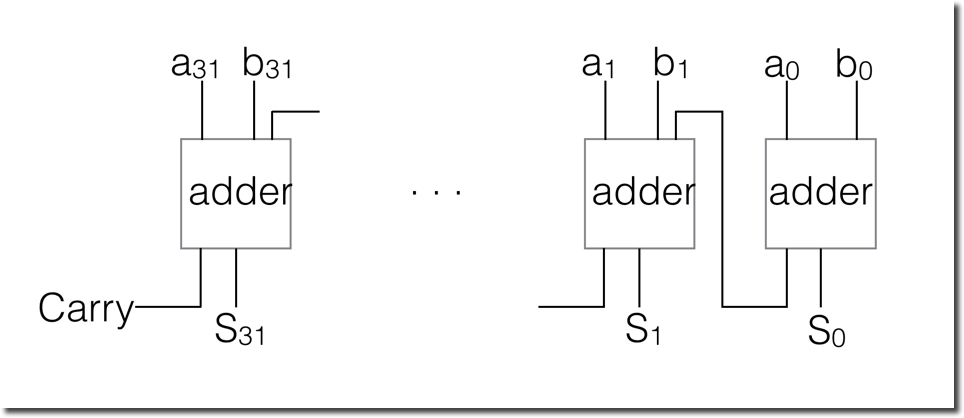Difference between revisions of "CSC270 Homework 3 2016"
(→Problem 1) |
(→Problem 1) |
||
| Line 11: | Line 11: | ||
:Using this design as inspiration, design a 32-bit subtraction circuit, that will output ''a''-''b'', if ''a'' and ''b'' are the two integers whose bits are shown in the diagram. | :Using this design as inspiration, design a 32-bit subtraction circuit, that will output ''a''-''b'', if ''a'' and ''b'' are the two integers whose bits are shown in the diagram. | ||
| − | ::''Hints'': ''a''-''b'' is really ''a'' + ''b'' | + | ::''Hints'': ''a''-''b'' is really ''a'' + the 2's complement of ''b''. |
<br /> | <br /> | ||
| + | =Problem 2= | ||
| + | <br /> | ||
| + | Design a circuit that has 3 input sets: ''a'', a 32-bit signal, ''b'', another 32-bit signal, and ''x'', a 1-bit signal. The circuit has 33 outputs. When ''x'' is 0, the circuit outputs ''a''+''b''. When ''x'' is 1, the circuit outputs ''a''-''b''. | ||
<br /> | <br /> | ||
<br /> | <br /> | ||
Revision as of 20:28, 9 February 2016
--D. Thiebaut (talk) 20:13, 9 February 2016 (EST)
Problem 1
Below is a 32-bit binary adder. We have seen it in class. It outputs a+b, where a is represented by a31...a0, and b by b31...b0.
- Question 1
- Using this design as inspiration, design a 32-bit subtraction circuit, that will output a-b, if a and b are the two integers whose bits are shown in the diagram.
- Hints: a-b is really a + the 2's complement of b.
Problem 2
Design a circuit that has 3 input sets: a, a 32-bit signal, b, another 32-bit signal, and x, a 1-bit signal. The circuit has 33 outputs. When x is 0, the circuit outputs a+b. When x is 1, the circuit outputs a-b.
